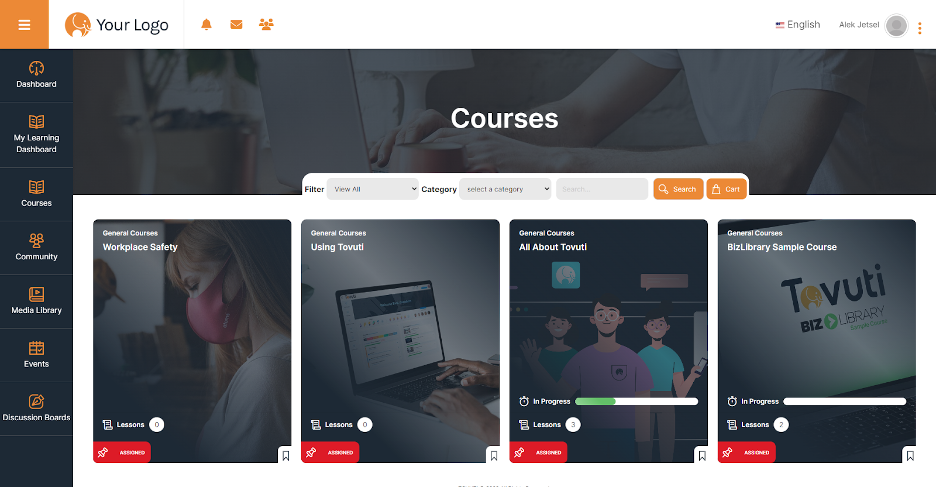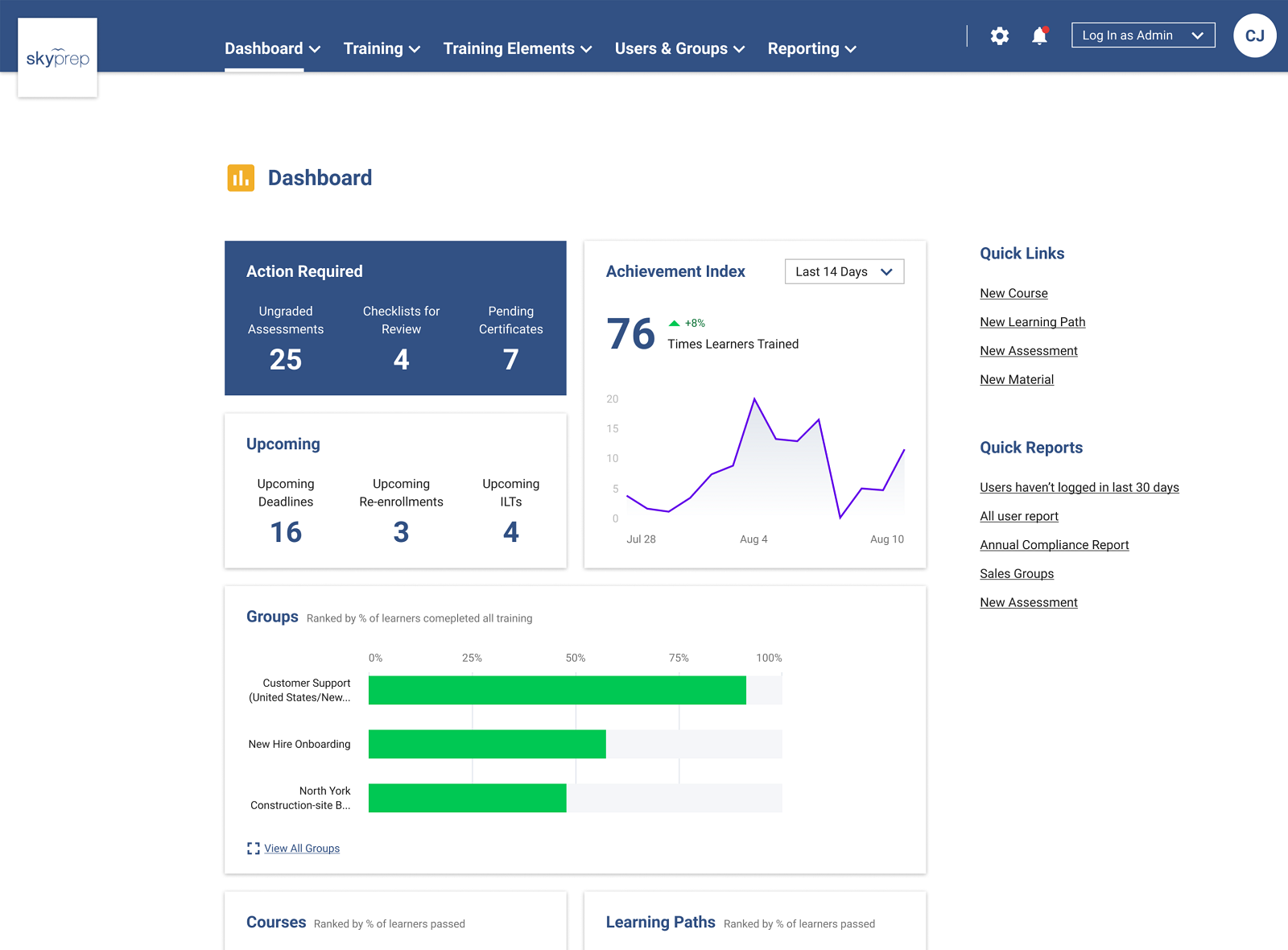How To Choose the Right Learning Delivery Format
It’s no secret that the past few years expedited the evolution of learning technology, forcing learning and development (L&D) leaders to strike a balance between new and traditional formats, trends, and strategies in a new era of blended learning.
L&D leaders must now choose between multiple formats and routinely choose the best format for each situation. Is it in-person only? Virtual? Or a combination of both?
Employees have adapted to a variety of hybrid and remote learning formats, from multi-day virtual sessions to video-only presentations and virtual classrooms. These mediums offer increased flexibility and accessibility to all employee groups.
Workers can learn at their own pace, different learning styles can be easily accommodated, and training can happen quickly and seamlessly. However, there is still value to in-person education, and over the next few years L&D leaders will need to stay on top of trends in this space to keep choosing the best format for their business.
Where are the current learning delivery format trends?
In our post-pandemic world, at least 42% of HR professionals expect a majority of their workforce to work in a hybrid environment, according to Gartner [1]. This increase in remote work means that virtual or hybrid learning is bound to happen, meaning employers will need to adapt their training styles.
Businesses should expand their virtual and hybrid approach beyond ongoing training to encompass onboarding. While remote work is on the rise, in-person work isn’t going away, so employers must adjust to new communication standards, knowing that employees might be in mixed locations. New hires might start on the same day, with some working remotely and some at a physical location.
These trends have created an ecosystem that needs the best of both worlds. By balancing content complexity, intended outcomes, need for speed, and audience attributes, hybrid learning offers the flexibility, scalability, and cost-effectiveness of virtual formats while realizing its limitations. Not all jobs and organizations can operate fully remotely, and a blended experience allows L&D leaders to deliver the same content in the same channel to all employees at the same time.
Hybrid learning allows employees to receive individualized attention and engage at their own pace, leading to higher levels of comprehension [2]. Plus, different learning styles can be more easily accommodated since employees have multiple formats to engage with (e.g., watching a prerecorded training presentation and then studying charts and diagrams once they receive the slides in a follow-up email).
All different learning delivery formats have pros and cons, and hybrid learning aims to deliver the best of what each delivery format (virtual, in-person, hybrid) offers.

Course customization in LMS and virtual classroom software Tovuti
How to choose the right learning delivery strategy
Selecting a learning delivery strategy is not a one-time decision, and even within the same company, the best option might change from training to training.
Strategy 1: Align the learning format with the circumstances
When considering in-person or virtual learning channels, L&D leaders should answer the following questions:
Do we need fast scaling and adoption, or is this only being delivered to a small segment of the organization?
Is the content highly complex, and will it require extensive Q+A?
Are we supporting ongoing skills, or rapidly disseminating new knowledge?
Does the audience of this training have a high incentive to adopt this on their own?
Can our target audience easily and comfortably engage with virtual learning formats?
Does this require using personal technology that some employees might not have?
Is this best suited to synchronous delivery, or can employees go at their own pace?
This assessment is key in determining whether the content will set learners up for success in an in-person environment or virtual channels. Depending on your goals, audience needs, and subject matter, the best channel will change.
If information needs to be shared quickly, virtual training might be the best option. For highly technical and complex information that needs to be shared with the entire organization (without employees going at their own pace), a hybrid option or in-person training might work best.

The admin dashboard in SkyPrep, an employee training software solution
Strategy 2: Ensure hybrid learning doesn’t create unequal access
Prior to COVID-19, one of the bigger challenges with learning delivery formats was unequal access. Educational materials might’ve been provided online, but when some of the audience was in-person, this led to disengagement among virtual attendees.
Accessibility issues arose when only in-person options were offered; if an employee was unable to attend, they simply missed out altogether.
Hybrid learning can create unequal access, but if L&D leaders are more aware of gaps and work to mitigate them, they can minimize the effects. These key considerations can help you do just that:
Switch learning formats so training is delivered to all employees in the same way while catering to different audiences (e.g., training one is virtual for all employees, but training two is in-person for all employees).
Gather feedback from employees as to how they prefer to learn.
Facilitate opportunities for personalized, one-on-one feedback and engagement, regardless of the delivery system.
Using a learning management system to consolidate and standardize employee access is one way of ensuring equality across the board. This can solve accessibility issues and ensure team members are able to quickly find the latest information in one spot. Materials can be easily referenced in the employee’s preferred learning style, whether that is listening to the presentation again or reading through a transcript.
Wondering how your employees want to learn?
Ask them! An employee pulse survey tool is a great way to do just that. Use these tools to distribute short, informal surveys or questionnaires to ask what learning delivery formats employees prefer, and adjust your training strategy accordingly.
Learn more about these tools here, or explore (and compare) systems.
Strategy 3: Separate training’s primary purpose from its ancillary benefits
All training and education have a main goal along with supplemental benefits. When choosing an effective delivery format, focus on your core objective. This makes it easier to choose one approach when there are multiple benefits to different formats.
A simple example is an annual health insurance and benefits presentation. While ancillary benefits increase employee engagement and satisfaction, the ultimate goal is to deliver enrollment information and have employees sign up for their insurance plan. With this complex content being an ongoing procedure and process, virtual might be the best option to reach the most employees and collect resources in a recordable, reviewable format.
Key considerations and challenges of choosing a learning delivery format
L&D leaders should carefully assess each individual learning opportunity to choose the best option.
A blended approach should allow all participants to interact in the same channel. Without standardized participation, participants can experience unequal access, creating negative outcomes for specific groups. An after-training networking lunch, for example, only applies to in-person participants, leaving virtual attendees unable to participate. An alternative would be to host the networking in a virtual classroom or environment.
L&D leaders should adopt the strengths of each individual learning format. The last few years have showcased significant benefits of online learning, such as increased accessibility, easy adoption, and standardization. Even when instituting new in-person education, core virtual components can be retained. For example, following a training, an online course platform could house a recording of the training or the slide deck indefinitely.
Learning delivery decisions should be made on a case-by-case basis. Even within the same organization, the needs and goals of employee education will vary. L&D leaders should avoid a single approach or adopting a single learning delivery format for their training programs.
Resources to help you navigate hybrid learning
Remote working, flexible lifestyles, and an increased need for accessibility are here to stay. These resources can help your organization with your journey to implement a new or changed learning approach:
Note: The applications selected in this article are examples to show a feature in context and are not intended as endorsements or recommendations. They have been obtained from sources believed to be reliable at the time of publication.